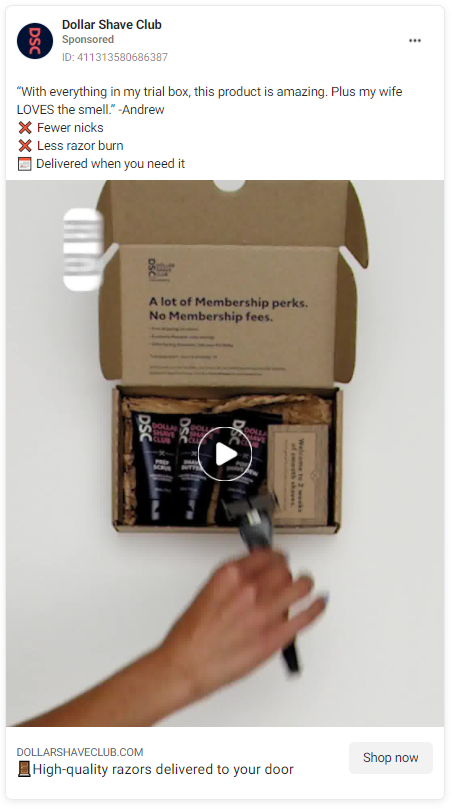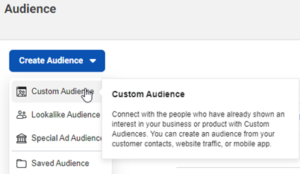If Facebook Ad Campaigns Were A Sandwich, Here’s How to Make The Perfect One
I think we can all appreciate a good sandwich. A well designed sandwich can make your whole day. Good bread, quality meat and cheese and just the right amount of sauces and special toppings. My favorite this time of year is a thick cut turkey on toasted whole grain bread with a slice of sharp cheddar, fresh green apple slices, with grainy mustard and mayo.
But my (amazing) sandwich recipe isn’t why you’re here (unless it is, in which case you’re welcome). You’re here to learn more about the secret sauce we use to make great Facebook ad campaigns that deliver results, just like a sandwich delivers joy. A good Facebook campaign is a lot like a good sandwich. With quality ingredients and a little prep, you too can make a great sandwich AND a great Facebook ad campaign. So now that we’re all starving, let’s grab a sammy and get into it…
The Bread (aka Targeting)
The foundation to any sandwich is good bread, and there are a lot of different types of bread for different applications; white, wheat, whole grain, sourdough, ciabatta, brioche, baguettes, wraps… I could go on, but back to Facebook. Facebook is like a sandwich in that if you don’t have a good foundation (aka solid targeting), you’re left with a mess.
Awareness campaigns are a good place to start and will put your brand in front of people who may not have known you before. This grows your potential customers and allows you to do a lot of other advanced targeting on Facebook, as well as other ad platforms.
Awareness campaigns are necessary to fill your remarketing audiences and grow your customer base. For this reason, about 50% of your advertising budget should be spent on awareness tactics. This keeps your audience engaged and growing, to feed remarketing and other efforts. Without awareness tactics, your new customer funnel could dry up and your remarketing audiences could dwindle.
Facebook is a great platform for generating awareness because of its unique targeting capabilities. It’s a good idea to test many different target audiences to see how each of them respond to your brand. These could include targeting based on a user’s interests, recent life events, parenting categories, financial status, online browsing and purchasing behaviors, and more.
Lookalikes are another great option for awareness campaigns. To create a Lookalike audience, upload a list of your current customers to Facebook (the larger and more high quality the list, the better). Then Facebook will match up characteristics that your uploaded users share and find other users who match those characteristics. This will give you a whole new audience to target that “looks like” your uploaded list of proven customers. This is usually a good place to start with awareness targeting if you aren’t sure what interests or commonalities your target audience shares.
The Meat (aka Remarketing)
Once you’ve chosen your bread, it’s meat time! Make it turkey, ham, chicken, or maybe even a mushroom for the vegetarians, this is really the main attraction and should not be overlooked. The meat of Facebook ads would be remarketing. This is where users are lowest in the funnel and where you will likely get most of your results.
One of my favorite things about Facebook is that remarketing doesn’t just mean users who have visited your website (which, with iOS updates, is becoming increasingly difficult). There are many other ways to “remarket” to an audience who has already been exposed to your brand. Here are a few ideas to get you started:
- Users who have watched videos in other ads or on your Page.
- Users who have interacted with other ads or posts.
- Users who have visited specific pages of your website or taken a specific action.
- Users who have shown interest in your Facebook event.
- Users who have interacted with an instant experience ad.
The options on Facebook for remarketing to people who have engaged with your brand in some way either within Facebook’s platforms, on your website, or even offline, are pretty much endless. To see all of your options, visit the Audience section of Ads Manager and choose Create an Audience > Custom Audience.
You should remarket to a mix of people, including users who have interacted with your brand on Facebook and users who have visited your website or app. The more touch points a user has with your brand, the more likely they are to convert (possibly more than once if that fits your objectives), and even share and refer you to their friends.
It’s also important to separate out the audiences listed above so that you can customize the message each segment of your audience is seeing. For example, you may want to offer someone who added an item to their cart free shipping to encourage them to complete that purchase. Whereas you may not need to make that offer to someone who watched a video on Facebook or just visited your website for the first time. Those audiences should get different messages about the benefits of your product.
The Cheese (aka Tracking)
As a Wisconsinite, I am personally offended when people make a sandwich without cheese. If you don’t like cheese, I have one question; who hurt you?
Cheese is the performance tracking: there are a lot of different ways to do it, and it isn’t always easy, but any way you slice it, it’s 100% necessary for a successful Facebook campaign.
Every Facebook ad account should create a Pixel and place it on your website for basic tracking. A “Pixel” is what Facebook calls their tracking code. Once you create one within the Events section of Ads Manager, you will be given a code to place on the website. This will enable you to track website visits and events.
In addition to tracking website visitors via the Pixel, you should set up an event to track the main conversion on your site. This may be submitting a lead form, making a purchase, or signing up for a newsletter. If you have an ecommerce website, you should also track add to cart and initiate checkout in addition to purchase.
Tracking is definitely not a step that should be skipped (much like cheese)! Of course there are many metrics Facebook offers without any additional set up, like reach, engagement, clicks, etc., but being able to track conversions is important for establishing success of the campaign and optimizing performance.
The Sauce (aka Great Creative)
 No one likes a dry sandwich, so a good sauce can be make or break. Much like that secret sauce on your favorite deli sandwich, ad creative is the secret to success for every Facebook campaign.
No one likes a dry sandwich, so a good sauce can be make or break. Much like that secret sauce on your favorite deli sandwich, ad creative is the secret to success for every Facebook campaign.
Social media is very visual, so the image or video used in your ad is important. Typically, lifestyle images including people perform best. The more your ad can directly fit into a user’s feed, the better performance will be. If it is obvious that your post is an ad, that often doesn’t resonate well with a passive social media audience.
When doing video, it should be 15 seconds or less and should include your brand name or logo within the first 3 seconds. It’s also a good idea to size your video with a 16:9 option that fits well into Stories and phone screens. If your video has dialogue, it’s also important to include captions to make your video accessible and understandable if the audio is muted. Most users are scrolling through their feed at work or in other public areas and therefore don’t have the sound on. Keep that in mind when making video content.
Let’s Eat
If there’s one thing I know, it’s making a good sandwich. And if there are two things I know, the second is setting up a good Facebook ad campaign (I know, an amazing set of skills, right?). Whichever one you’re attempting, if you have good quality ingredients, all the right parts, and a little patience, you can be successful too.
I would be remiss not to mention (as I’m sure you’re aware) that Facebook (*ahem, Meta) is really going through something at the moment. But ultimately, as of now, Facebook advertising still gets results and as long as that continues, advertisers will continue to use the platform, but this is definitely something we are monitoring closely. I mean, Jimmy Johns had that whole sprouts with E. coli debacle a few years ago and they recovered…
Anyway, I hope you enjoy your next sandwich and that your Facebook ads bring you success. If you need help with either, feel free to reach out!

